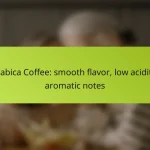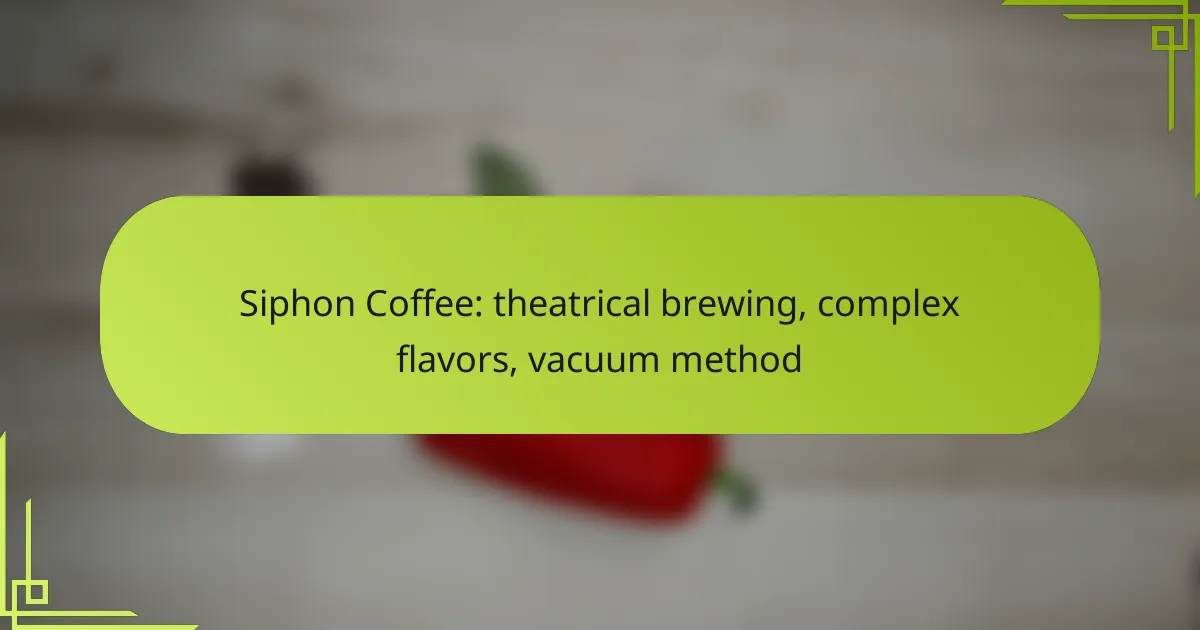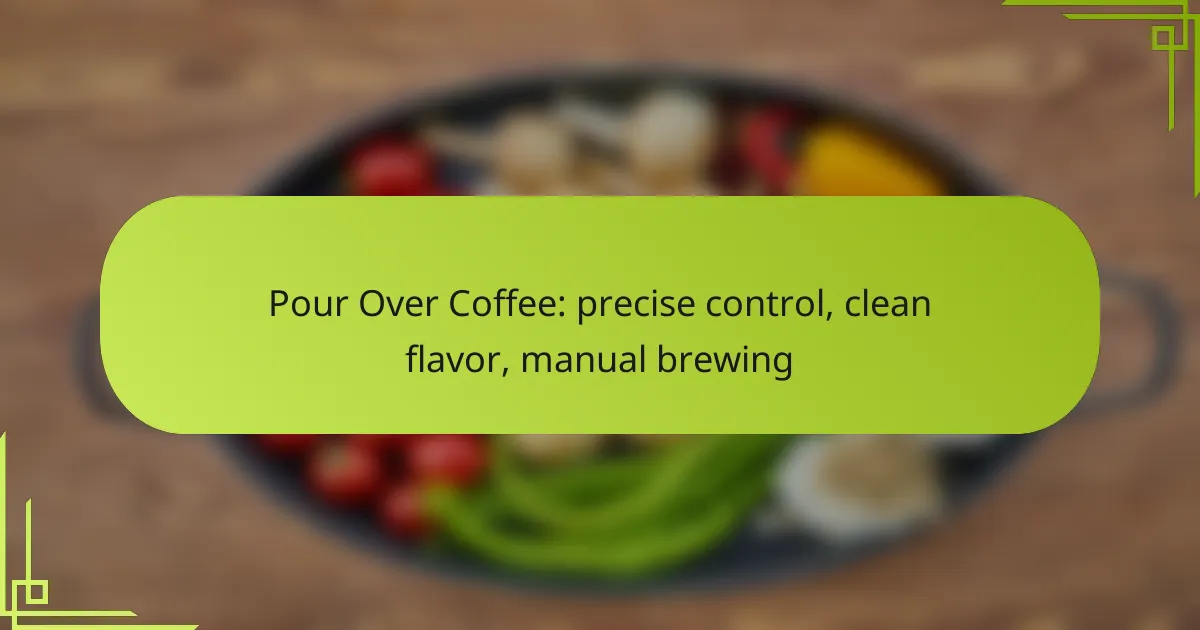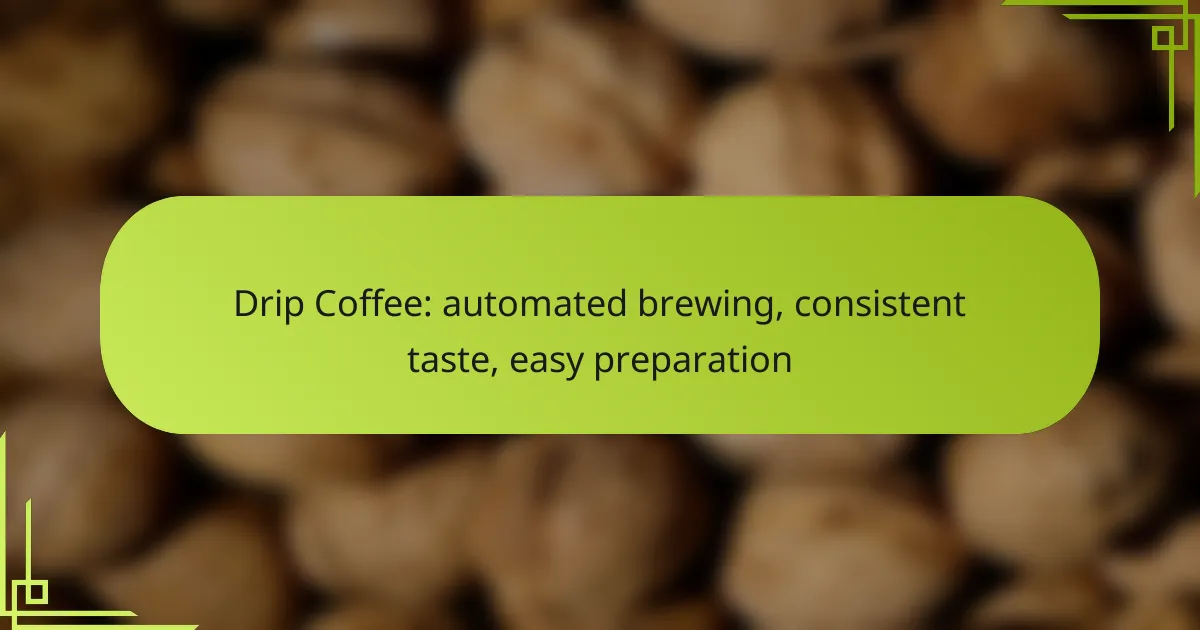Espresso brewing is a unique process that utilizes high pressure to quickly extract concentrated flavors from finely ground coffee. This method, typically performed with an espresso machine, allows for a rich and intense coffee experience, making it a favorite among coffee enthusiasts. With the right equipment and quality beans, anyone can master the art of brewing espresso at home.
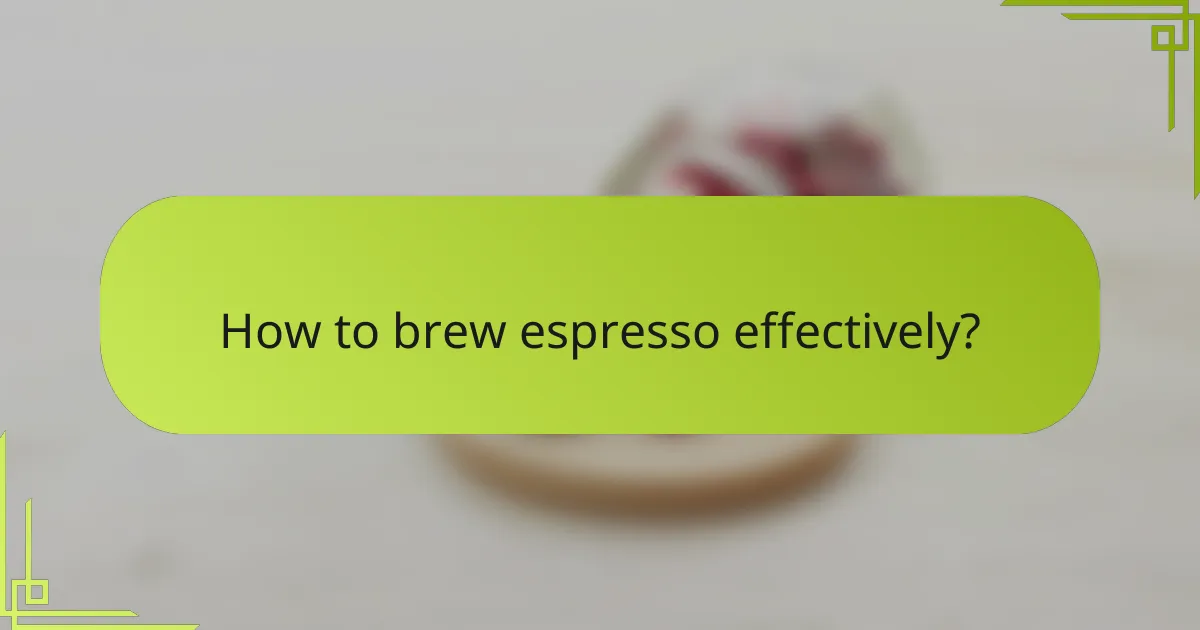
How to brew espresso effectively?
To brew espresso effectively, you need to use high pressure to extract concentrated flavor quickly from finely ground coffee. This process typically requires an espresso machine, but there are also manual techniques and alternative methods like the Moka pot that can yield satisfying results.
Using an espresso machine
An espresso machine is designed to force hot water through coffee grounds at high pressure, usually around 9 bars. This method allows for rapid extraction, typically taking about 25 to 30 seconds to produce a shot of espresso.
When using an espresso machine, ensure that your coffee is ground to a fine consistency and that you use the right amount, generally around 18 to 20 grams for a double shot. Regularly clean your machine to maintain optimal performance and flavor quality.
Manual brewing techniques
Manual brewing techniques, such as the AeroPress or lever espresso makers, can also produce espresso-like coffee. These methods require more hands-on involvement and allow for experimentation with pressure and extraction time.
For example, with an AeroPress, you can create a concentrated coffee by using a fine grind and applying pressure manually. Aim for a brew time of around 30 seconds to achieve a rich flavor profile similar to traditional espresso.
Using a Moka pot
A Moka pot is a stovetop brewer that creates pressure through boiling water, producing a strong coffee that resembles espresso. While it doesn’t reach the same pressure levels as an espresso machine, it can still yield a rich, concentrated flavor.
To use a Moka pot, fill the bottom chamber with water, add finely ground coffee to the filter basket, and assemble the pot. Place it on medium heat and watch for the coffee to start bubbling into the upper chamber, which usually takes about 5 to 10 minutes. Be mindful not to overheat, as this can lead to a burnt taste.

What equipment is needed for espresso brewing?
To brew espresso, you’ll need a few essential pieces of equipment that work together to create the high-pressure environment necessary for extracting concentrated flavor. The primary items include an espresso machine, a quality grinder, and several accessories to enhance the brewing process.
Espresso machine types
There are several types of espresso machines available, each catering to different skill levels and budgets. Manual machines require the most skill and effort, allowing for complete control over the brewing process. Semi-automatic machines offer a balance of control and convenience, while fully automatic machines simplify the process with programmable settings.
For those seeking convenience, capsule machines provide a quick way to make espresso with minimal cleanup, though they may limit flavor complexity. When choosing a machine, consider factors like pressure consistency, temperature stability, and ease of use.
Grinders for espresso
A good grinder is crucial for espresso brewing, as the grind size directly affects extraction quality. Burr grinders are preferred over blade grinders because they provide a uniform grind, which is essential for achieving the proper pressure during extraction. Look for grinders that allow for fine adjustments to dial in the perfect grind size.
Generally, espresso requires a fine grind, often resembling table salt. Investing in a quality grinder can significantly enhance the flavor and consistency of your espresso shots.
Essential accessories
Several accessories can improve your espresso brewing experience. A tamper is necessary for compressing the coffee grounds evenly in the portafilter, ensuring uniform extraction. A scale can help you measure coffee and water accurately, which is vital for consistency.
Other useful accessories include a milk frother for creating lattes and cappuccinos, a shot glass for measuring espresso output, and a cleaning brush to maintain your equipment. These tools can enhance your brewing process and ensure better results with each cup.

What are the best coffee beans for espresso?
The best coffee beans for espresso are typically high-quality Arabica and Robusta varieties, chosen for their rich flavors and suitable acidity. Selecting the right beans can significantly enhance the espresso’s taste and aroma, making the brewing process more rewarding.
Arabica vs. Robusta
Arabica beans are known for their smooth, complex flavors and higher acidity, making them a popular choice for espresso. They generally contain less caffeine than Robusta beans, which have a stronger, more bitter taste and a thicker crema. Many espresso enthusiasts prefer blends that combine both types to balance flavor and body.
When choosing between Arabica and Robusta, consider your taste preferences. Arabica is ideal for those who enjoy nuanced flavors, while Robusta can provide a bolder, more robust profile. A common approach is to use a blend of both to achieve a well-rounded espresso experience.
Single-origin coffee options
Single-origin coffees are sourced from a specific region or farm, allowing for unique flavor profiles that reflect their origin. Popular regions for espresso beans include Ethiopia, Colombia, and Brazil, each offering distinct characteristics. For instance, Ethiopian coffees often have fruity notes, while Colombian beans are known for their balanced acidity.
When exploring single-origin options, look for beans that are freshly roasted and have tasting notes that appeal to you. These coffees can provide a more personalized espresso experience, showcasing the distinct flavors of their geographic origins.
Popular espresso blends
Espresso blends are crafted to create a harmonious balance of flavors and aromas, often combining various bean types. Some well-known blends include the Italian espresso blend, which typically features a mix of Arabica and Robusta for a rich, full-bodied shot. Another popular choice is the espresso blend from specialty roasters, which may highlight specific flavor notes and origins.
When selecting a blend, consider the roast level and flavor profile that suits your palate. Many espresso drinkers enjoy experimenting with different blends to find their ideal balance of sweetness, acidity, and body. Look for blends that are specifically labeled for espresso to ensure optimal extraction and flavor.
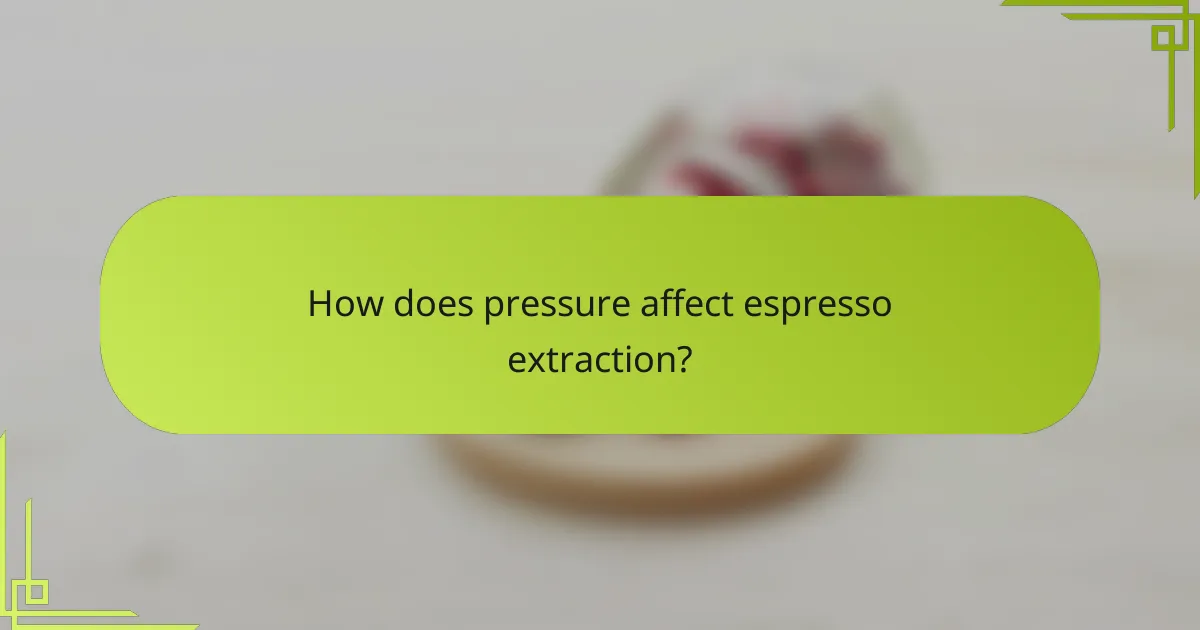
How does pressure affect espresso extraction?
Pressure plays a crucial role in espresso extraction by influencing the rate at which water passes through the coffee grounds, ultimately affecting the flavor and quality of the shot. Typically, espresso is brewed at around 9 bars of pressure, which optimally extracts the concentrated flavors and aromas from the coffee.
Optimal pressure levels
The ideal pressure for brewing espresso is generally accepted to be between 8 to 10 bars. This range allows for a balanced extraction, where the water effectively penetrates the coffee grounds without over-extracting bitter compounds. Lower pressures may result in under-extraction, while excessive pressure can lead to over-extraction, producing undesirable flavors.
Baristas often use pressure profiling techniques to adjust the pressure throughout the extraction process, allowing for greater control over the final flavor. For example, starting with a lower pressure and gradually increasing it can enhance sweetness and complexity in the cup.
Impact on flavor profile
The pressure used during espresso extraction significantly impacts the flavor profile of the beverage. At optimal pressure, the extraction yields a rich, full-bodied shot with balanced acidity and sweetness. Higher pressures can intensify bitterness and lead to a more astringent taste, while lower pressures may result in a sour or weak flavor.
Additionally, the crema, a layer of golden foam on top of the espresso, is influenced by pressure. Proper pressure helps create a thick, stable crema that enhances the overall sensory experience. Adjusting pressure can therefore be a powerful tool for baristas aiming to craft specific flavor profiles in their espresso shots.
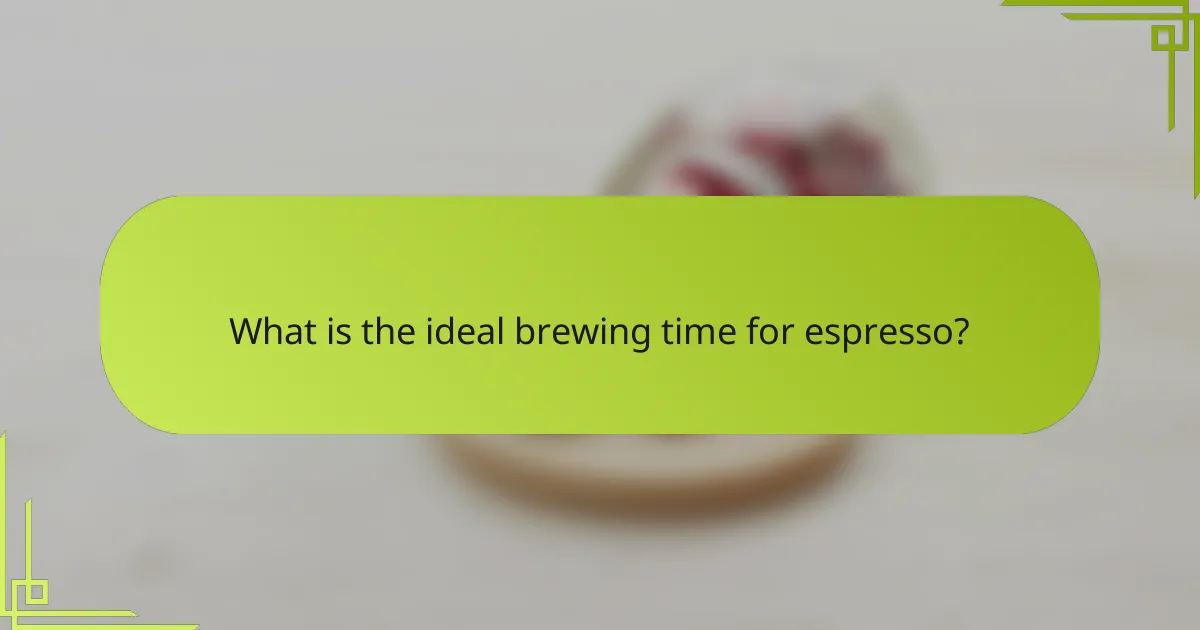
What is the ideal brewing time for espresso?
The ideal brewing time for espresso typically ranges from 25 to 30 seconds. This duration allows for optimal extraction of flavors, resulting in a concentrated shot with rich taste and aroma.
Standard brewing duration
Espresso is generally brewed within a time frame of 25 to 30 seconds. This standard ensures that the water extracts the essential oils and flavors from the coffee grounds effectively. Brewing for less than 25 seconds may result in under-extraction, leading to a sour taste, while exceeding 30 seconds can cause over-extraction, resulting in bitterness.
Factors influencing extraction time
Several factors can affect the extraction time of espresso, including grind size, coffee dose, and water temperature. A finer grind increases surface area, allowing for quicker extraction, whereas a coarser grind may require a longer brewing time to achieve the desired flavor profile.
Additionally, the amount of coffee used can influence brewing time. A higher coffee dose may lead to a slower extraction, while a lower dose can speed up the process. Water temperature also plays a critical role; hotter water can extract flavors more rapidly, impacting the overall brewing time.
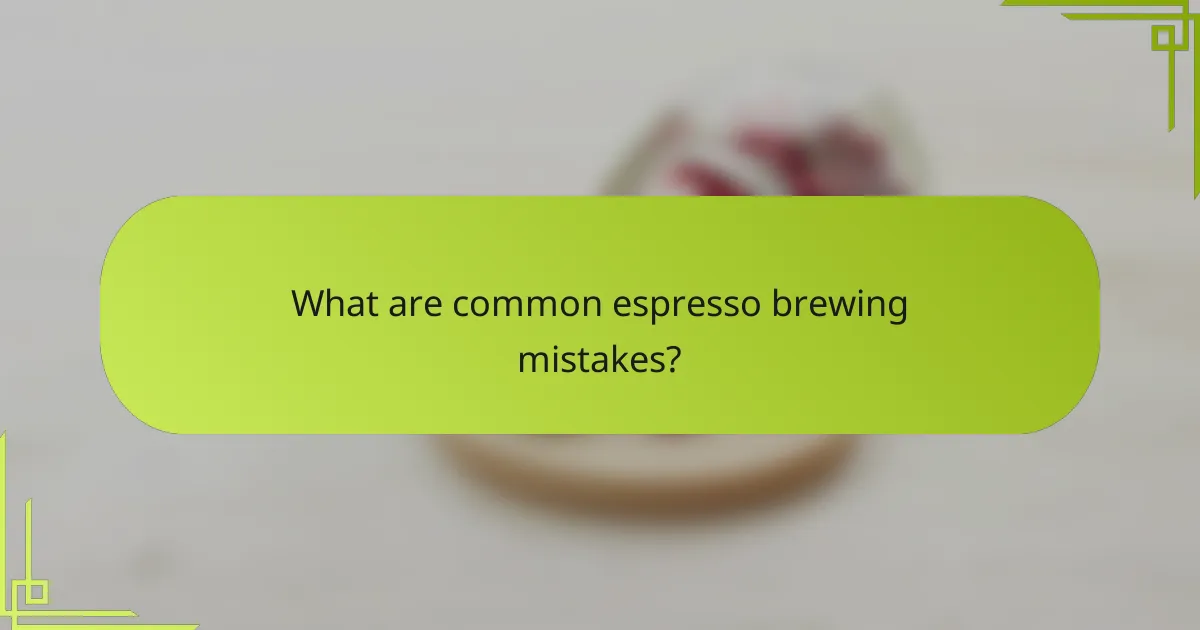
What are common espresso brewing mistakes?
Common espresso brewing mistakes can significantly impact the quality of your coffee. Key errors include using the wrong grind size, improper tamping technique, and incorrect water temperature.
Incorrect grind size
The grind size of your coffee beans is crucial for espresso extraction. A grind that is too coarse will lead to under-extraction, resulting in a weak flavor, while a grind that is too fine can cause over-extraction, making the coffee bitter.
For optimal results, aim for a grind size similar to table salt. Adjusting the grind size can help achieve the desired balance of flavor and strength in your espresso.
Poor tamping technique
Tamping is the process of compressing the coffee grounds in the portafilter, and doing it incorrectly can lead to uneven extraction. Insufficient tamping may cause water to flow too quickly through the coffee, while excessive tamping can restrict water flow.
To achieve a consistent tamp, apply firm and even pressure, around 30 pounds of force, and ensure the surface is level. This will help create a uniform coffee bed for better extraction.
Water temperature issues
The temperature of the water used in espresso brewing plays a vital role in flavor extraction. Water that is too hot can scorch the coffee, while water that is too cool may not extract the full range of flavors.
Ideal brewing temperatures typically range from 90°C to 96°C (194°F to 205°F). Use a thermometer to monitor the water temperature, ensuring it stays within this range for optimal espresso quality.
